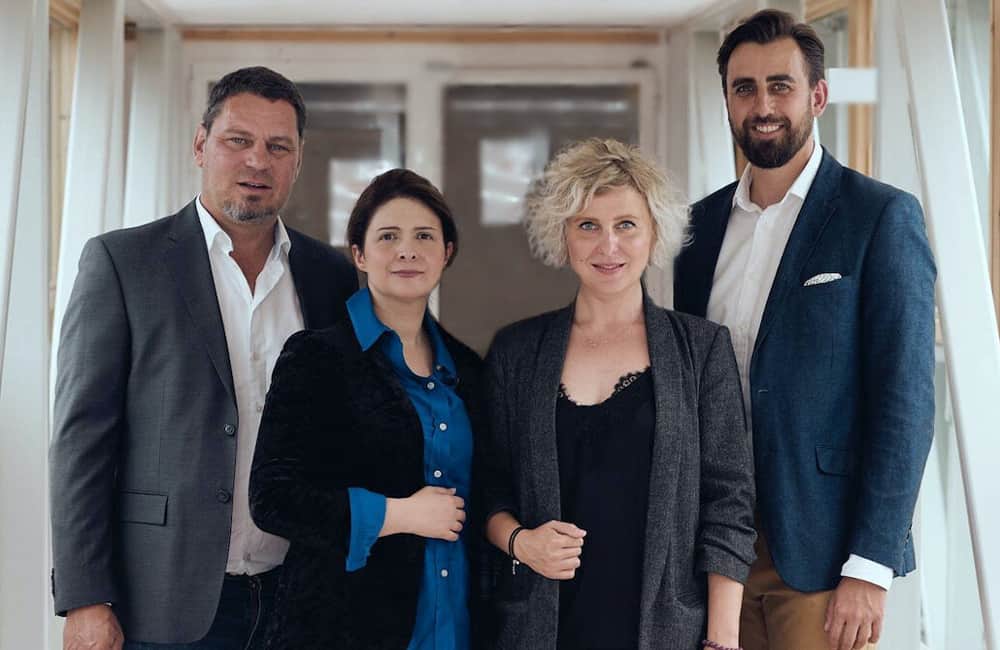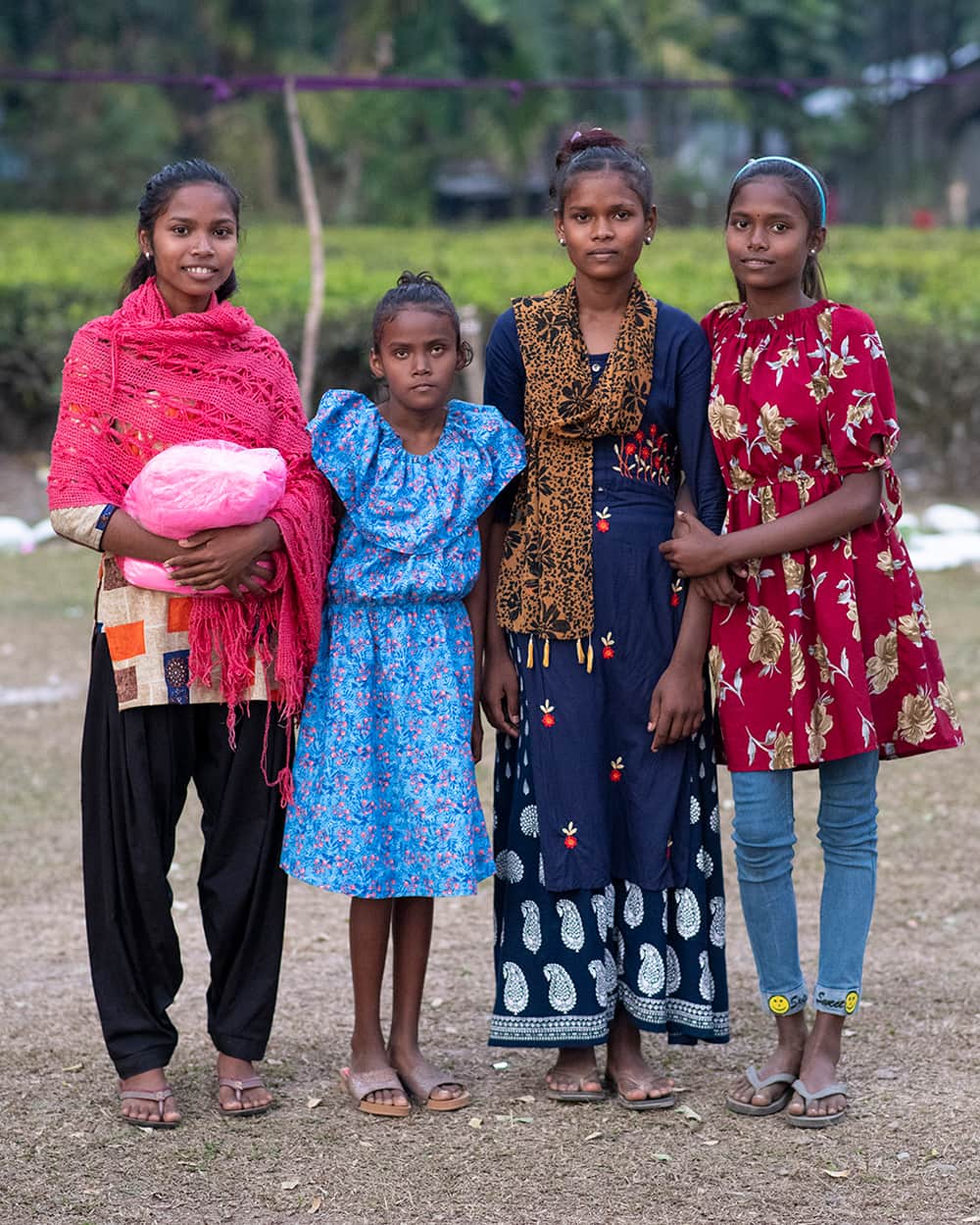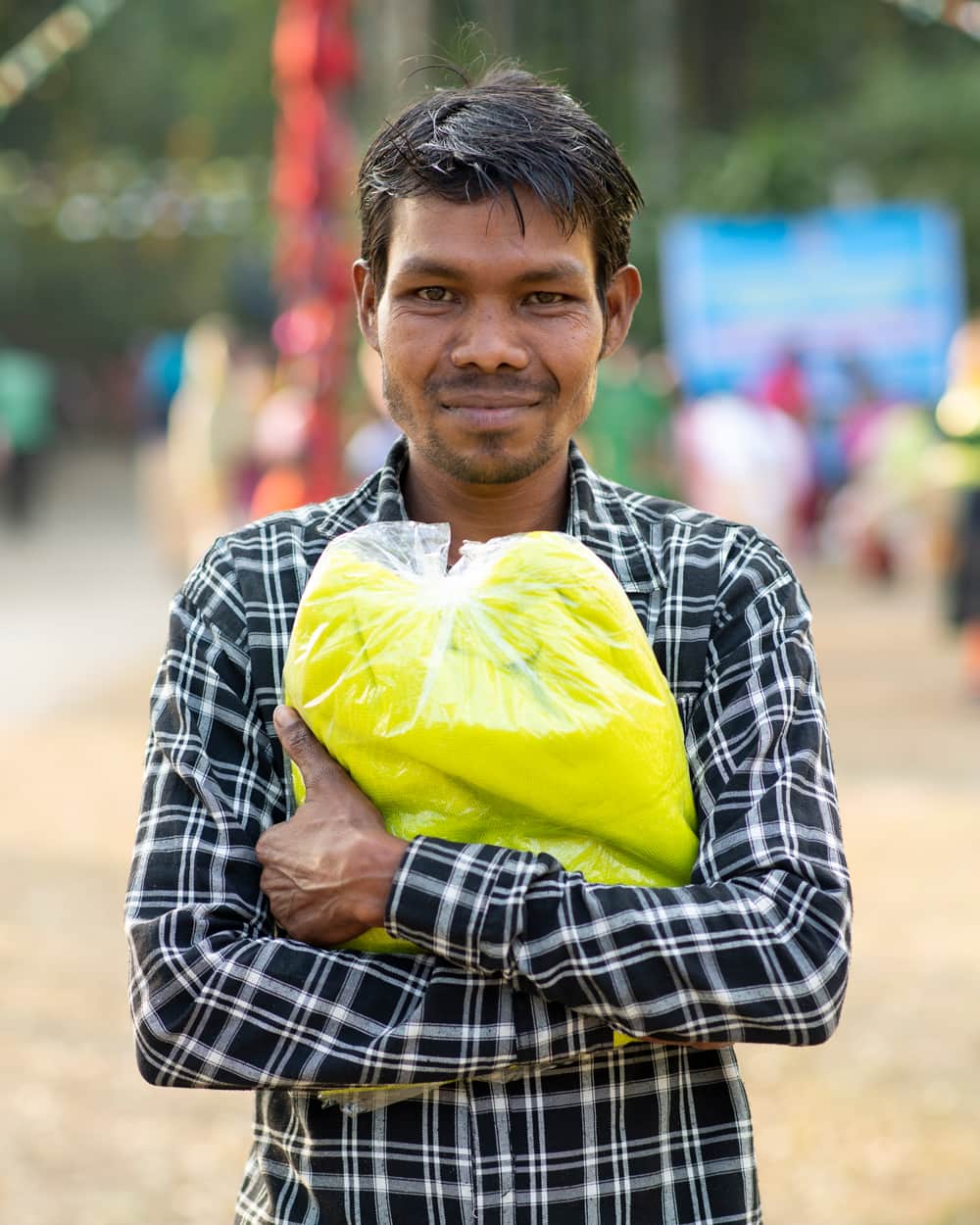
It’s the “buzz” millions around the world have been waiting to hear—the news of a mosquito-busting breakthrough decades in the making.

Nurse Janet Wanyama prepares to vaccinate a child against malaria at the Malava County Hospital, Kakamega, Kenya. Photo by Gavi/2021/White Rhino Films-Lameck Orina
On Oct. 6, 2021, the World Health Organization (WHO) announced that for the first time ever it was recommending the widespread use of a vaccine to protect children at risk of mosquito-borne malaria—one of the biggest killers of children under 5 in sub-Saharan Africa.1
In a news universe saturated by COVID-19 recently, this “historic” announcement struggled to make a splash in the mainstream media. But in the ongoing worldwide battle against life-threatening mosquito bites, this vaccine heralds a game-changing development in the fight against malaria.
“This is a historic moment,” said WHO Director-General Dr. Tedros Adhanom Ghebreyesus. “Using this vaccine on top of existing tools to prevent malaria could save tens of thousands of young lives each year.”2
Every year, more than 260,000 children under the age of 5 in sub-Saharan Africa die from the effects of malaria, according to WHO.3 After years of stagnated progress in the fight against the disease in nations such as Ghana, Kenya and Malawi, the breakthrough finally came with a trial vaccine known as RTS, S/AS01—not exactly a memorable name for such a landmark moment.

Dr. Matshidiso Moeti, WHO Regional Director for Africa. Photo by WHO, Regional Office for Africa
WHO endorsed widespread use of the four-dose vaccine in areas with “moderate to high P. falciparum malaria transmission,” following a pilot program that’s involved giving the shot to more than 900,000 children since 2019.4 P. falciparum is also the most prevalent strain in Africa.
“For centuries, malaria has stalked sub-Saharan Africa, causing immense personal suffering,” said Dr. Matshidiso Moeti, WHO’s Africa Regional Director. “We have long hoped for an effective malaria vaccine, and now for the first time ever, we have such a vaccine.”5
The breakthrough offers “a glimmer of hope” for the continent that “shoulders the heaviest burden of the disease,” Moeti said.6
As of October 2021, more than 2.3 million shots-in-arms had been administered to children in the three-nation pilot program, covering parts of Ghana, Kenya and Malawi. Initial results indicated that more than two-thirds of children who were not sleeping under insecticide-treated bed nets were protected by the vaccine. And the shot—more than 30 years in the making—reduced cases of severe and deadly malaria by 30 percent.7

U.S.A. government via the President's Malaria Initiative and USAID, donated $1.8 million in malaria commodities to the Ministry of Public Health that oversees Madagascar's annual malaria campaign, including over 2 million rapid diagnostic tests and nearly 2 million doses of treatment for both normal and severe forms of malaria. The supplies were timely because Madagascar had seen a spike in malaria -- in the first six months of 2020, over 1 million people there had been diagnosed with malaria and over 600 people died from the disease.
Malaria and Changing Temperatures
The encouraging news, at long last, of an effective vaccine against malaria comes just months after a study by the London School of Hygiene & Tropical Medicine suggested rising worldwide temperatures could cause a dramatic increase in malaria cases.8

Malaria and dengue fever may start having an even broader reach worldwide if temperatures continue to rise and extend the disease’s transmission season. Transferal will also happen faster as population density increases causing many more to become ill.
According to a report in The Lancet Planetary Health, the European study estimates 8.4 billion people could be at risk from malaria and dengue fever by the end of the century if rising temperatures were to go unchecked and the world’s population continues to ramp up.9
While the year 2100 seems a long way off, the European researchers base their dire predictions on “worst-case scenario” effects of greenhouse gas emissions and population density producing warming temperatures of 3.7 degrees Celsius—about 6.6 degrees Fahrenheit.10
Malaria could “gradually increase as a consequence of a warming climate in most tropical regions, especially highland areas,” said the report, citing countries potentially at risk as including Ethiopia, Kenya, South Africa, Somalia, Saudi Arabia, Peru, Mexico and Venezuela.11
Encouraging news of an effective vaccine against malaria comes just months after a study suggests rising worldwide temperatures could cause a dramatic increase in malaria cases.
What’s more, researchers also predict changes to weather patterns could cause a “northward shift” of the malaria-epidemic belt into North America, northern and central Europe and northern Asia if temperatures heat up, placing populations in the developed and largely malaria-free nations of the West at risk.12
But researchers also acknowledge their study faces limitations because they’re unable to predict advances in vaccines and drugs, or future mutations in malaria parasites.13
Malaria ‘Cat and Mouse’

A 1125X photomicrograph magnification of a Giemsa stained, thin film blood smear, revealing a mature, Plasmodium malariae schizont.
Meanwhile, researchers at Texas Biomedical Research Institute are playing a game of “cat and mouse” with malaria parasites—trying to catch parasites in the act of mutating into different strains.14
Scientists at the San Antonio facility have been studying five different malaria parasite species that infect people, probing how certain parasites mutate as they hide in the liver, where they can lie dormant for months—only to strike later with a vengeance.15 While such studies of new mutations are in the early stages, it’s hoped they’ll eventually help researchers understand how malaria parasites develop resistance to drugs and evade the body’s immune system. It could also pave the way for new malaria treatments in the future.16
Tricking Mosquitoes With … ‘Toxic’ Beetroot Juice?
Malaria is responsible for the deaths of more than
400,000 people
worldwide in 2019.
In the seemingly never-ending quest to wipe out malaria—responsible in 2019 for the deaths of more than 400,000 people worldwide, roughly equivalent to wiping out the entire population of Miami, Florida—scientists are experimenting continually with new ideas to combat “the enemy” … the pesky mosquito.17
Perhaps one of the most unusual ideas involves “toxic” beetroot juice.
Researchers at Sweden’s Stockholm University have been preying on mosquitoes searching for their next tasty blood meal. They’ve shown that it’s possible to mimic a blood feast using beetroot juice laced with a “toxic” plant-based solution that kills mosquitoes but doesn’t harm other species, such as bees.18
Until the malaria vaccine usage is widespread, there are still a number of simple but highly effective solutions to combat malaria. One is mosquito bed nets. Another in process, is toxic beetroot, which kills the female carriers.

Beetroot is part of a simple “pink juice” mixture which mimics mosquito’s food drawing in the pest and safely dispatching of it without harming other organisms.
According to an October 2021 report in ScienceDaily, the Swedish team tested four different ingredients in a beetroot juice cocktail. All the mosquitoes feeding on the “fake blood” died within a few hours.19
“This mixture, [which] we call ‘pink juice,’ is a harmless … eco-friendly solution, but it is naturally toxic for female mosquitoes,” said Noushin Emami, a professor in the university’s Department of Molecular Biosciences.20 The Stockholm researchers hope to see their “feeding trap” tested in the field and eventually used alongside other effective mosquito control measures.
“There are a number of … approaches targeting mosquitoes … but I believe that there is a lot of potential in developing very simple but highly effective solutions,” Emami said. “We used beetroot in this study to demonstrate exactly this point.”21

Molecular Attraction team. From left: Johan Paleovrachas, Co-founder and Chairman, Noushin Emami, PhD, Co-founder and CSO, Aleksandra Gromnicka, Project Manager, Lech Ignatowicz, PhD, Co-founder and CEO. Photo by Molecular Attraction

People typically get malaria after being bitten by an infective female Anopheles mosquito.
Facing a Global Emergency
Despite recent breakthroughs and progress, malaria remains one of the biggest threats to children’s lives on the global stage. “Every two minutes, a child dies of malaria,” said UNICEF’s Stefan Swartling Peterson.22 According to the agency, nearly half of the world’s population is at risk. The U.S. Centers for Disease Control (CDC) says the mosquito is the most deadly creature in the world—killing more people each year than sharks, wolves, lions, crocodiles and snakes combined.23
Alarming facts include the following:24
8 out of 10 malaria deaths
occur in only 15 countries—14 of them in Africa, plus India.
Third largest killer of children
under age 5, after pneumonia and diarrhea.
9 out of 10 malaria deaths
occur in sub-Saharan Africa.
Deaths of thousands
of women and unborn children every year, are due to Malaria in pregancy.
Quest to Become Malaria-Free

USAID's indoor residual spraying activity has protected almost 7 million Ugandans from malaria, and contributed to reducing malaria infection rates in targeted districts by 55 percent.
In a June 30, 2021 news release from the World Health Organization, it was stated that "Globally, 40 countries and territories have been granted a malaria-free certification from WHO—including, most recently, El Salvador (2021), Algeria (2019), Argentina (2019), Paraguay (2018), and Uzbekistan (2018).”25
In June 2021—following a 70-year battle against malaria—China joined the coveted list of malaria-free countries. WHO described it as a “notable feat” for the world’s most populous nation.26
In the 1940s, China reported 30 million cases of malaria each year.27 According to a CNN report, during the Vietnam War, more Chinese soldiers died from malaria than bullets in the mosquito-ridden jungles.28 China is the first country in more than 30 years in the Western Pacific region to rid itself of the disease.29
Many nonprofits are on the frontlines, operating health clinics, providing medicine, and distributing lifesaving bed nets in even the most isolated places.
WHO credits China’s success in eradicating malaria to aggressive government action to wipe out mosquito breeding grounds, develop better antimalarial drugs and pioneer preventive measures. In the 1980s, China was one of the first countries to test insecticide-treated bed nets on a large scale—showing that widespread use of bed nets at night could significantly reduce mosquito bites and malaria cases.30

China has a long history of malaria, but it has now maintained zero indigenous malaria cases for four years running, down from an estimated 30 million cases and 300,000 deaths per year in the 1940s. This malaria free certification by WHO in 2021 is a significant life-saving achievement for China, showing the potential for real progress in the fight against malaria. Photo by WHO/C.McNab
The Battle On the Frontlines: Mosquito Nets
Science and facts tell part of the story. But the real-life impact of malaria is unfolding right now in the rural villages of sub-Saharan Africa, the teeming cities of Asia and the Amazon rainforests of South America.
Many global nonprofit organizations—including World Vision, Save the Children and GFA World—are on the frontlines, operating health clinics, providing medicine, and distributing lifesaving bed nets in even the most isolated places.

Dr. K.P. Yohannan,
GFA Founder
“Some of their communities are in such deep trouble fighting this disease, our workers were dealing with thousands of cases,” said GFA World founder K.P. Yohannan. In one malaria-prone area of Asia, workers climbed a mountain on foot to reach a remote, mountaintop community caught in a malaria death cycle, Yohannan said. “The people of this community, extremely isolated … didn’t know how to prevent or treat malaria.”
GFA World missionaries—driven by the belief that every human life is precious to God—distributed some 200 mosquito bed nets they’d carried up the mountain, as well as malaria medicine, and showed the local people how to protect themselves and halt the deadly wave.
“From the day they brought the medicine and nets, not a single person in that community died of malaria,” Yohannan said. “What does this tell us? In remote, malaria-ridden places across Asia, a mosquito net can change an entire community.”

Because of mountainous terrain in many parts of South Asia, GFA World teams often hand carry critical provisions, like mosquito nets, on their backs while climbing mountains to reach the villages in need of supplies.

These four motherless sisters were very happy to receive a bed net for their family to keep them safe from mosquito bites and other insects. The oldest daughter works to make ends meet, but earns less than $2 a day.
One Less Thing to Fear
Living in an area with high rates of malaria, Bahman and his wife, Salli, were terrified they’d lose their two young daughters to the disease. They knew a mosquito net—costing about $10—would be a potential lifesaver. But they were too poor to afford one.
Increasing their fear, one of their daughters had been paralyzed for three years. If she contracted malaria, would she survive?
That’s when a local GFA missionary realized the dilemma facing the couple and their neighbors. He took action—and 100 families, including Bahman’s, were given bed nets. “You helped us by providing a piece of mosquito net in our lives, though you never knew us before,” Bahman said. “We are touched with your love.”

Nepal, June 2024: GFA World national missionaries, helpers, and volunteers, distributed mosquito nets to local villagers from economically poor and underprivileged backgrounds.
Making It Personal Makes a Difference

For $10, about the cost of morning coffee, you can gift a life-saving mosquito net to a parent in Asia or Africa, like this man who struggles to provide for his family amidst extreme poverty, and cannot afford to buy one himself. He can then safeguard his loved ones from harmful mosquito bites that carry vector-borne diseases like malaria. His family will be forever grateful to you.
For many of us born and raised in a malaria-free country, malaria is not something we worry about. It’s a “tropical disease” that’s a long way from affecting our lives. Mosquito bites are an itchy annoyance—that’s all.
This was certainly true for me—until the day I watched malaria’s deadly fever grip my African friends in Uganda. That’s when it became personal for me. They were suffering on the edge of death because they couldn’t afford a basic bed net or antimalarial tablets that cost just a few dollars—things that were readily available, and that I took for granted.
For $10, you can place a life-saving bed net into the hands of a family at risk, a family—like Bahman’s—who will be forever grateful. So far, GFA World’s national missionaries have given out more than 1.3 million mosquito nets. They’d love to hand out millions more.
China has shown us it’s possible to obliterate malaria from the world’s most populated country. And now—with an effective vaccine—the end is finally in sight around the globe. If we all work together, we can see malaria eradicated everywhere.
One shot … one bed net … one child at a time.
How Your Donations Are Applied
We value your donation and are committed to good stewardship of the funds entrusted to us by our friends and donors. All gift options represent GFA’s actual ministry efforts to meet the diverse needs of individuals and communities. Regardless of particular preferences, monies are raised for ministry purposes, and GFA retains discretion to use donated funds in any manner that serves GFA’s charitable objectives.





